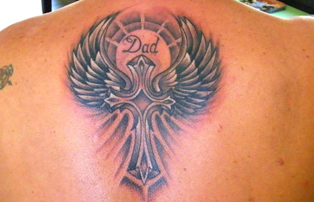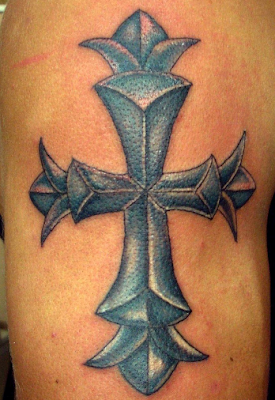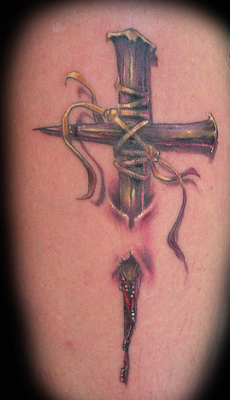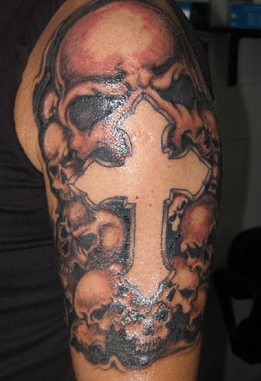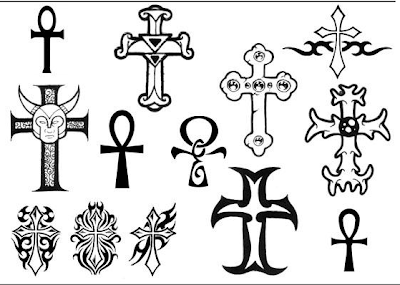The Cross is one of the most ancient, widespread, and important symbols in human history - the vertical and horizontal lines representing Father and Mother Nature, respectively. The point of intersection of those two lines -- the point of synthesis -- represented those mystical and spiritual concepts that embraced the meeting of the material and the spiritual in human existence.
Religious symbolism is prominently featured in several tattoo design genres, both ancient and modern, and in fact it could be argued that all traditional tattooing among indigenous peoples has a strong spiritual element.
It symbolized life and immortality, fertility, the union of heaven and earth, the sun and the stars. Its four pointers, or arms, symbolized North, South, East and West, or the four winds, the elements, not to mention the human form, itself. Is protective symbol.
Ancient Egypt used the hieroglyph "ankh" for regeneration, later adopted by the Christian Copts to symbolize physical and eternal life. The ankh, unique for its loop over the cross, came to be used in astrology as the sign of Venus, and is still used today in biology to identify the female sex. The Indian Cross was a symbol of auspiciousness. More recently, the direction of the four arms was reversed -- also known as the Swastika -- and came to represent Nazi Germany under Hitler.



